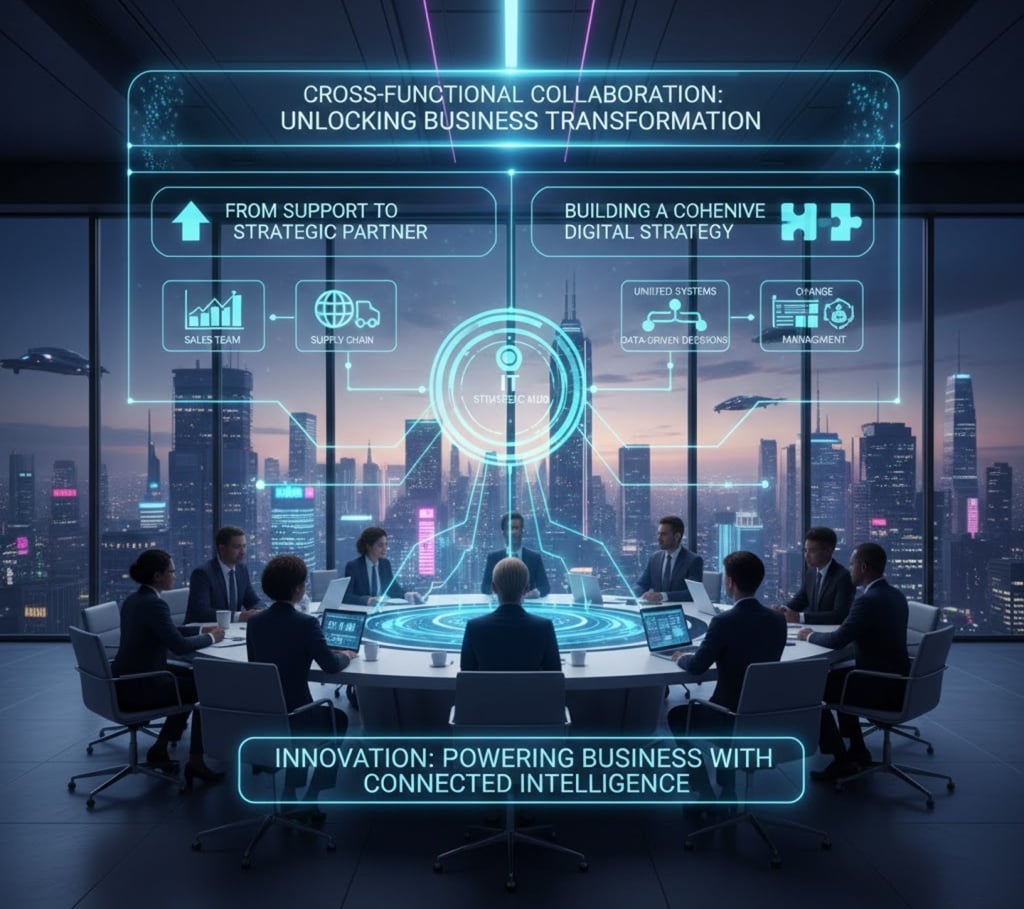Cross-functional collaboration, is the key to unlocking true business transformation.
Mr. Hunain Panjwani
10/11/20252 min read


From Support to Strategic Partner 📈
Historically, IT was seen as the department you called to fix a broken computer or set up an email account. Its role was reactive and operational. Today, a successful digital transformation requires IT to be a proactive, strategic partner to every department, from marketing to finance. By understanding the goals and challenges of each business unit, IT can provide the right enterprise solutions to drive growth and efficiency.
For example, IT shouldn't just manage the CRM system for the sales team; it should collaborate with them to understand their workflow and implement new tools or automations that genuinely help them sell more effectively. Similarly, IT can work with the supply chain team to implement real-time tracking systems that reduce costs and improve customer satisfaction.
Building a Cohesive Digital Strategy 🧩
A company-wide digital strategy ensures that all departments are working towards the same goals and using compatible technologies. This prevents a fragmented IT modernization where different departments acquire different systems that don't talk to each other.
Unified Systems: A cohesive strategy promotes the use of unified enterprise solutions (e.g., an all-in-one ERP system or a single communication platform) that can be integrated across the entire organization. This eliminates duplicate data entry and provides a single source of truth for the entire business.
Data-Driven Decisions: By connecting systems, IT enables a company-wide view of data. This allows every department to access and analyze the information they need to make better, faster decisions. For example, a marketing team can use real-time sales data to optimize ad campaigns, and a product team can use customer support data to prioritize new features.
Change Management: IT is not just responsible for implementing new technology; it is also a leader in change management. By working closely with each department, IT can ensure that employees are trained, engaged, and ready to adopt new technologies. This minimizes resistance and ensures a smooth transition to a more modern, digital-first operation.
By taking a holistic approach, IT transforms from a cost center into a powerful engine for innovation and growth. It's the unifying force that connects people, processes, and technology to create a more agile, competitive, and future-ready business.
